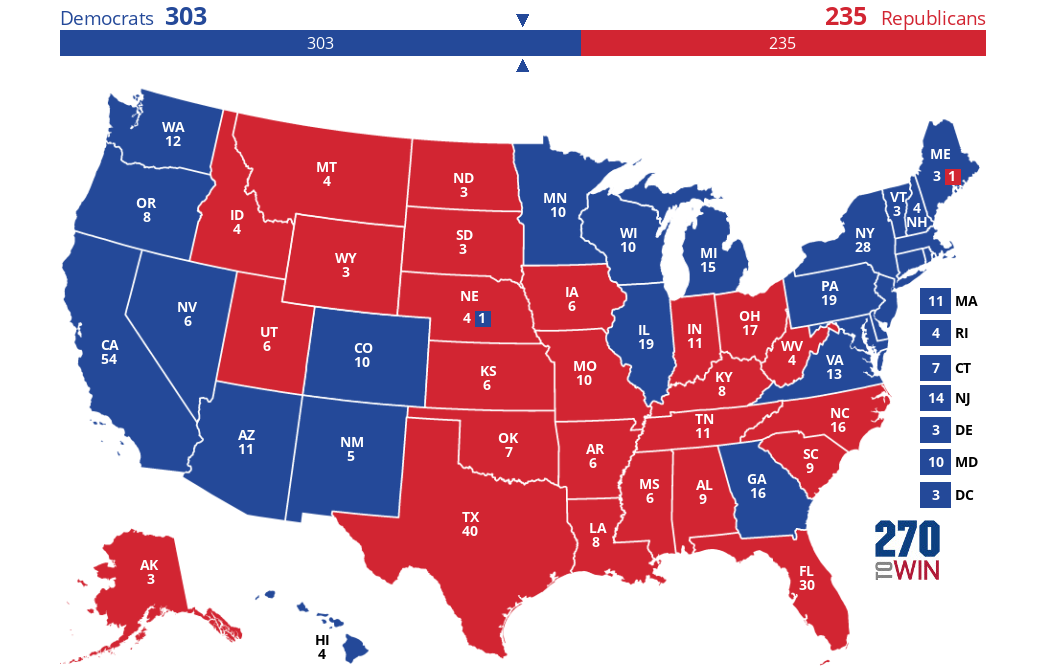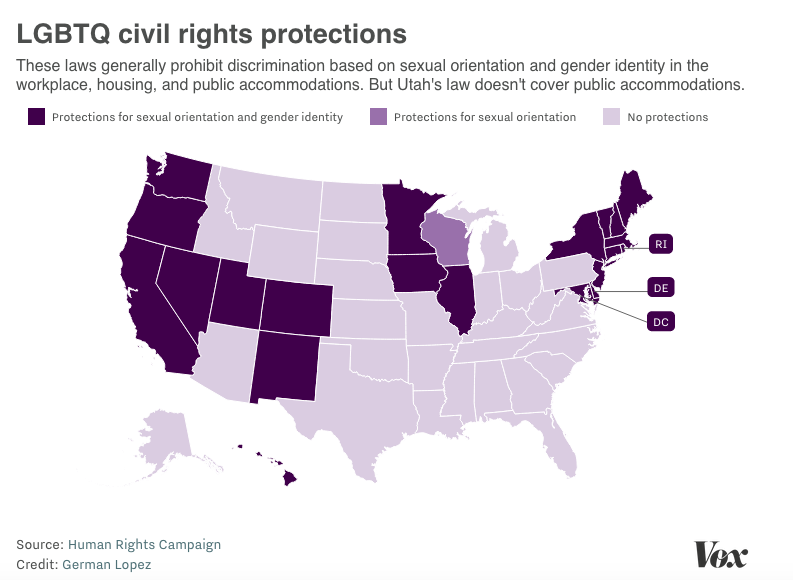Equality Inequality
Critical Analysis
According to the data from the map above, in how many of the 50 states are LGBTQ Americans fully protected from discrimination?
What geographic patterns do you see in the map above?
If you overlaid the map above with a map showing the political party affiliation by state (see the 2020 election map below)* how would Democratic majority states compare to the states with nondiscrimination policy?
According to the data from the map above, what protection does your state offer LGBTQ people from discrimination?
In 1964 the U.S. Congress passed the landmark Civil Rights Act which outlawed discrimination based on race, religion, national origin and, notably, sex. Why didn’t Congress outlaw discrimination based on sexual orientation in 1964?
In a landmark victory for equality, on June 15, 2020, the Supreme Court ruled in Bostock v. Clayton County that employment discrimination against LGBTQ people is sex discrimination and prohibited by Title VII of the Civil Rights Act of 1964. The Equality Act would codify that decision by listing sexual orientation and gender identity as prohibited grounds of employment discrimination under federal law, and would clarify that other federal laws barring sex discrimination also prohibit discrimination based on sexual orientation or gender identity. Courts across the country have agreed that LGBTQ people should be protected under existing nondiscrimination laws, and now the highest court in our nation has affirmed that Title VII protects LGBTQ people at work. The U.S. Congress could outlaw LGBTQ discrimination today with the bipartisan Equality Act and update federal law to include express and enduring nondiscrimination protections for LGBTQ Americans in key areas of life including employment, housing, education, and public spaces. Explain what this ruling illustrates about the relative power of the U.S Courts and the U.S. Congress.
The Equality Act passed the U.S. House on 02/25/2021, but it has not yet passed the U.S. Senate. Based on your knowledge of American politics and the legislative process, explain why this particular bill was able to quickly pass the House, but still has not passed the Senate.
Did you know that the New York case, Altitude Express Inc. v. Zarda, was brought by a skydiving instructor, Donald Zarda, who said he was fired because he was gay. His dismissal followed a complaint from a female customer who had voiced concerns about being tightly strapped to Mr. Zarda during a tandem dive. Mr. Zarda, hoping to reassure the customer, told her that he was “100 percent gay.” He was fired. Mr. Zarda sued under Title VII of the Civil Rights Act and lost the initial rounds. He died in a 2014 skydiving accident, and his estate pursued his case which they won in a recent appeals court ruling. If you were on the Court (you aren’t) explain how you would rule on this issue?
American’s have different protection from discrimination in different states. How does that inequality match up with the Constitution’s 14th Amendment guarantee of equal protection under the law?
On November 16 the Senate voted to advance a bill that would protect same-sex and interracial marriages under federal law, setting the legislation on a path to final passage. The Respect for Marriage Act would not force states to issue same-sex marriage licenses, but would require them to recognize same-sex marriages performed elsewhere. It also would recognize these marriages under federal law for the consideration of benefits like Medicare and Social Security. All 50 Democrats and 12 Republicans voted to advance the bill, clearing a 60-vote threshold. In your mind, is the issue of same-sex marriage an argument for or against federalism?
Learning Extension
Read about the Equality Act.
Action Extension
The Equality Act passed the U.S. House on 02/25/2021. Contact your U.S. Senator and ask them to explain their position on The Equality Act.




